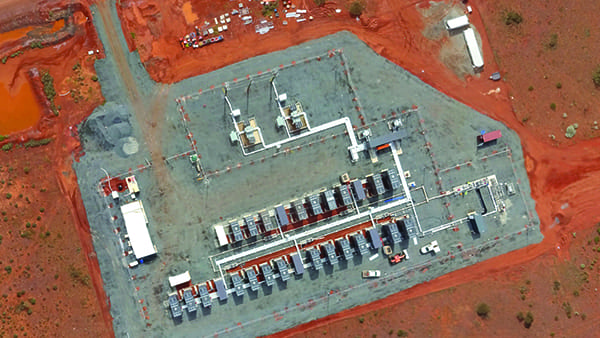Off-Grid Microgrid: Solar + Batteries + Thermal Generation
Today’s microgrid installations showcase a variety of configurations and control systems. Commercial and industrial sites are finding innovative ways to power their operations, particularly those in remote locations off the traditional grid. Glasgow, Scotland-based Aggreko recently signed a deal with Gold Fields Australia to deploy a solar-plus-batteries-plus-thermal-generation off-grid microgrid, designed to save fuel, reduce emissions, and boost power reliability.
 |
|
1. The Granny Smith gold mine in Western Australia will be powered by a microgrid that includes gas-fired generation, along with solar power and battery storage. Courtesy: Aggreko |
Aggreko, known for its mobile and modular power systems, will operate the microgrid at the Granny Smith gold mine (Figure 1) in Western Australia, located south of Laverton near Mount Weld. It is part of Gold Fields Yilgarn South operation, which includes the Lawlers Gold Mine and Darlot-Centenary Gold Mine. The system at Granny Smith includes 8 MWp (megawatt peak) of solar power generation, along with a 2-MW/1-MWh battery system, integrated with 24.2 MW of existing natural gas generation at the site. Construction is scheduled to begin in May and be completed by year-end. It will be managed by Aggreko’s control software platform.
The project comes after Aggreko in 2016 replaced the diesel power station at the site with a high-speed, gas-fueled reciprocating engine station. Aggreko said the solar-plus-battery system will reduce natural gas consumption of the microgrid by as much as 13%.
“Every mine has a different power requirement, described as its load profile,” George Whyte, managing director of Aggreko AusPac, told POWER. “Locations may or may not have access to a gas pipeline or trucked gas or space for a solar array. Based on fuel availability and other characteristics we custom design the solution using our standard modules. Wherever mines operate off the grid, this solution can be applied.”
Whyte noted, “Two features of Aggreko’s system are unique in Australia. One, a completely integrated controls platform inclusive of engines, switch gear, battery, and renewable sources, which then is applied to the client’s demand side. Two, these systems are monitored 24/7/365 by our global Remote Operations Centre, where experts in all of the contributing apparatus are [available] for operational and maintenance support.”
Whyte said Aggreko owns the equipment and provides all the services as part of a turnkey contract, with a power purchase agreement with the mine. There is no capital outlay from Gold Fields. The system is designed so that the solar photovoltaic (PV) will reduce the need to run the gas generators. The battery plant will provide spinning reserve displacement, along with PV ramp rate control, and transient voltage/frequency support. Stuart Mathews, Gold Fields’ executive vice president for Australasia, in a release said the company wants to be a leader in sustainable gold mining.
“We are thrilled to reach an agreement with Aggreko for the design, installation and operation of this innovative source of renewable energy, which will generate nearly enough power to run the mine’s processing operations,” Mathews said.
Karim Wazni, managing director of Aggreko’s Microgrid and Storage Solutions business unit, said, “We are on the industry forefront in offering a range of microgrid configurations on an as-a-service basis for users who want to leverage the benefits of a hybrid energy solution while minimizing capital outlay. The Granny Smith power station is a flagship example of what can be done with advanced technologies, intelligent engineering, and a committed, innovation-minded customer.”
Gold Fields currently operates all three of its Western Australian gold mines from gas-powered generating systems. The new hybrid power system, combined with a thermal station expansion at Granny Smith mine, will meet the entire mine’s increased daily power needs of 24.2 MW, with 12.2 MW allocated to the Wallaby underground mine and the remaining 12 MW for the processing plant, associated facilities, and mining camp. Said Whyte: “Gold Fields understands the performance, cost and environmental advantages for their operation, as well as the need to integrate this resource into their system without compromising power supply reliability or mining productivity.”
—Darrell Proctor is a POWER associate editor (@DarrellProctor1, @POWERmagazine).